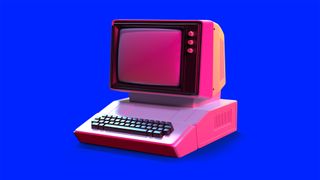How businesses can mobilise mainframes for the 21st century
Legacy processing power can be modernised to deliver effective web and mobile technology, says Iain Ramage

Mainframe computers have been with us since 1952, and they continue to power many of the world's biggest organisations - from governments and banks, to multinational retailers and global airlines. Their ability to process vast amounts of data both rapidly and securely is unsurpassed. But this still presents a challenge: how do we make them accessible via today's modern mobile applications?
Employees and consumers alike demand an interface that's easy to use, on any device, and wherever in the world they may be. Businesses, meanwhile, demand modern analytical applications to extract insight from the data they collect, which may be held in more than one repository. There is also a growing shortage of programmers fluent in traditional mainframe languages. For the tech firms who can help them to meet these challenges, a huge opportunity awaits.
Without the mainframe, things would fail fast
Mainframe technology is ideal for running critical business processes. Of all enterprises using a mainframe, 57% were running most of their business-critical applications on the platform according to a report published this year. This was projected to rise to 64% by 2019.
Meanwhile, the hardware and operating systems perform more than 12 billion large-scale transactions per day, while also supporting thousands of users and apps accessing numerous data points. These occur simultaneously and are encrypted to keep data safe.
Moreover, mainframe computers support 87% of all credit card transactions and nearly $8 trillion worth of payments a year, as well as over 30 billion transactions per day - more than the number of Google searches. The reality is no competing architecture can boast the sheer scope of improvements, optimisations and continuous service, as the mainframe.
'Mission-critical' is its middle name, and for a good reason. Often the mainframe is tasked with handling customer order processes, financial transactions, product and inventory control, as well as payroll, to name some examples. Imagine a world in which the mainframe wasn't around to carry out these tasks - things would fail, and fail fast.
Modernising for the future
So how can the tech community help enterprises take their mainframe technology further? Modern software tools, for instance, make it possible for companies to access their valuable data via new applications. The tools can also boost the mainframe's speed and efficiency, so it can keep up with growing consumer demands for faster, more accurate service.
Channel Pro Newsletter
Stay up to date with the latest Channel industry news and analysis with our twice-weekly newsletter
Green-screen modernisation software, which allows older systems to be accessed using a modern interface, and porting tools, which effectively "translate" languages and tools such as Java, Python, C++ and Git, could also open up the mainframe to a younger generation of programmers.
A familiar interface would also help to make life easier, and more pleasant, for non-technical staff, such as contact centre operators, or back-office administrators. Large supermarkets, for example, that have been a slave to the green-screen terminal in their warehouses and shop floors for years can now implement modernisation tools to extend the critical data stored on the mainframe, to modern devices, putting this data into the palms of employees.
The tools are there, but we must seize the opportunity
One of the largest opportunities in this space is the need for mobile applications. Innovations such as Application Programming Interfaces (APIs) have made it possible for companies running on a mainframe to take its processing power, and make this work on web and mobile technology.
Mobile workforces in local government or health services, as well as the private sector, need to be able to access data from a range of legacy systems, with APIs meaning the mainframe's security, reliability and scalability transferred to new platforms. They also allow for better data-sharing that leads to fresh, innovative mobile applications. As demand for this increases across all sectors, resellers must ensure they provide what their customers need.
Mainframe technology, along with other staples of computing history, remains intrinsic to business. Firms rely on them, and we know resources are being invested in modernising this infrastructure.
Iain Ramage is vice president for channel at Rocket Software




